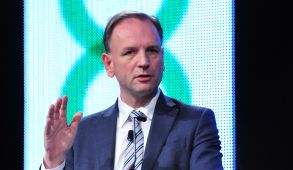New GP contract launches NHS plan implementation
The primary care networks will be central to the success of the contract, with plans to recruit 22,000 staff to work alongside GPs. The new staff will include pharmacists, physiotherapists, paramedics, physician associates and social prescribing support workers. This should free up GP time to see patients most in need of their care, while giving other patients access to a wide range of services in their local practice.
The networks will typically cover 30,000 to 50,000 patients and will be led by a local GP in a clinical director role. As well as funding of £1.8bn by 2023 to establish the networks, by that time there will also be a £300m fund for networks making faster progress on outcomes in the long-term plan. Primary and community care investment is due to rise by £4.5bn by 2023/24.
In 2019/20, network funding will be delivered through practices’ directed enhanced services payments, allowing them to employ at least one social prescribing link worker and one clinical pharmacist. The funding will cover 100% of the social prescribing worker salary and 70% of the pay for a clinical pharmacist – networks will receive 70% of the pay of physiotherapists, physician associates and paramedics as they are introduced in future years.
The new GP contract will also give family doctors a state-backed indemnity scheme from April, ensuring they do not have to personally fund clinical negligence cover – this has been a key factor in recruitment and retention in recent years.
Other changes include:
- Guaranteed investment of £405m in 2019/20, allowing practices to increase staff pay by at least 2%
- Digital access to primary care will increase, with 25% of appointments bookable online
- NHS England and the British Medical Association will lobby the government to reduce the problem created by the pension annual allowance to redress the effect this is having on GP recruitment and retention
- Quality and outcomes framework changes, with a new focus on improvements in the management of diabetes, blood pressure control and cervical screening in 2019/20. In future years, the focus will widen to include heart failure, COPD, asthma and mental health.
- From April, there will be new support for quality improvements, starting with prescribing safety and end-of-life care.
After 2020, investment in practices and networks will continue, ensuring pay can be increased at least in line with predicted inflation. Resources will also be available to enable online and video consultations.
NHS England chief executive Simon Stevens (pictured) said: ‘This five-year deal unarguably represents the biggest boost to primary care in more than 15 years, giving patients more convenient services at their local GP surgery while breaking down the divide between family doctors and community health services. It provides the practical foundation for the big service improvements in the NHS long-term plan. Patients across England – in towns, villages and cities – will all begin to see the benefits, beginning this year. And it allows us to keep all that’s best about British general practice while future-proofing it for the decade ahead.’
BMA GP leader Richard Vautrey said the new contract would begin to address issues around the GP workforce and access times for patients.
‘Support and funding for primary care networks mean practices can work together, led by a single GP, and employ additional staff to provide a range of services in the local area, ensuring patients have ready access to the right healthcare professional, and helping reduce workload pressures on GPs,’ he said.
‘This significant expansion in the workforce, which will eventually see over 20,000 healthcare staff based in networks across England, will also be expected to focus on some of the long-term plan’s commitments, such as support for care home residents and the earlier identification of people with cancer or cardiovascular disease.’
Related content
We are excited to bring you a fun packed Eastern Branch Conference in 2025 over three days.
This event is for those that will benefit from an overview of costing in the NHS or those new to costing and will cover why we cost and the processes.